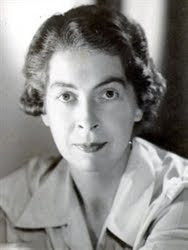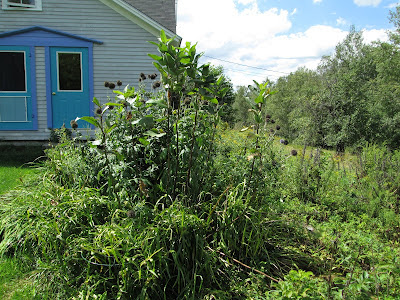
43. Out of Nova Scotia Gardens
by Marie Nightingale
cookbook, 1997, 2008
second book for the Canadian Book Challenge 6 - Nova Scotia
tenth book for Foodies Read 2 Challenge 2012
finished 8/5/12
This is another book sent me by my old email group friend. I
wrote about the first one, read for the 2nd Canadian Challenge, which I never finished. I have high hopes that I will be have greater success in the 6th one.
I sat down one early August day and read through this whole book. I can't imagine a more perfect cookbook for vegetable gardeners or for eaters of summer produce. There is a chapter for each vegetable with information about it, a few recipes, and a history of that particular vegetable. For example - have you ever wondered where the nickname 'spuds' for potatoes came from?
In the nineteenth century, when potatoes were considered by many to be unfit for human consumption, a group of Englishmen formed the Society for the Prevention of Unwholesome Diet and did their best to ban the vegetable from English dining tables. SPUD, has endured.
However, I read online that this is false, and that it really comes from the name of a tool used to dig them. I guess urban legends have been around a long time.
The author has a piece on rutabagas and turnips.
I'm going down hard when it comes to turnips. Or rutabagas. Or Swedes. That's because I grew up calling this winter root vegetable a turnip. For the last three decades, the Department of Agriculture has struggled to clarify its name (and, perhaps, its image). While there has been some success in renaming the turnip, it certainly adds to the confusion for Nova Scotians of my generation.
Each vegetable chapter includes a 'Chef's Corner' which highlights a Nova Scotian chef.
Marie Nightingale is a well-known food writer, who has written for the Halifax newspaper,
The Chronicle Herald, and was the food editor for
Saltscapes magazine. She has written other cookbooks, including Out of Old Nova Scotia Kitchens, which just this past March was one of the top five best selling nonfiction books in Nova Scotia. Pretty good for a book first published in 1970!
There are many recipes I look forward to trying in future summers, but for today, I decided to take some of my rhubarb out of the freezer and make these muffins. I also added a few frozen strawberries just because I love the way rhubarb and strawberries go together. We had them with salad and fresh baked corn for supper. Perfect!
Rhubarb Muffins
1/2 cup (125 ml) lightly packed brown sugar (I used white)
1/4 cup (50 ml) butter, melted plus 1 tablespoon (15 ml) (also melted, and set aside)
1 egg
1 teaspoon (5 ml) vanilla
1/2 cup (125 ml) buttermilk
3/4 cup (175 ml) diced rhubarb (I used 1/2 cup rhubarb and 1/4 cup strawberries, both from the freezer)
1/2 cup (125 ml) coarsely chopped walnuts
1 1/4 cups (300 ml) all-purpose flour (I used mix of whole wheat pastry and white)
1/2 teaspoon (2 ml) baking soda
1/2 teaspoon (2 ml) baking powder
1/4 teaspoon (1 ml) salt
1/4 cup (50 ml) granulated sugar
3/4 teaspoon (3 ml) ground cinnamon
Preheat oven to 375ºF. (190ºC)
Lightly grease a 12-cup muffin pan (I used cooking spray. Be generous with this; some of mine were a bit hard to get out without breaking apart)
Combine the brown sugar, 1/4 cup (50 ml) melted butter (cooled), egg, vanilla, and buttermilk in a large bowl and beat until blended. (I used KitchenAid mixer)
Stir in rhubarb and nuts.
Sieve together the flour, baking soda, baking powder, and salt. Fold into rhubarb mixture until just moistened.
Spoon the batter into muffin cups, filling them about two-thirds full.
Set aside.
Combine the saved out 1 tablespoon (15 ml) melted butter, granulated sugar, and cinnamon.
Sprinkle on the muffins, pressing lightly into the batter.
Bake for 20 minutes, or until the muffins spring back when pressed gently.
Serve warm.
These muffins are out-of-this-world terrific! I could have eaten all twelve easily at one sitting.

On a little note at the front of the book my friend Mary Jane wrote:
This one fairly screamed "Nan!" when I saw it.
And that is the truth! I love this cookbook, and will use it often.




















































